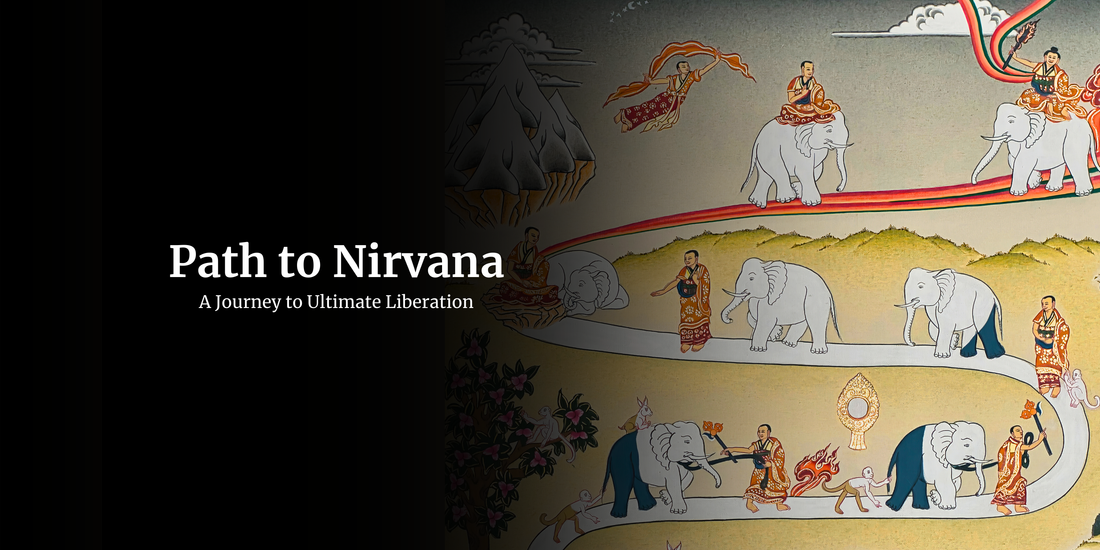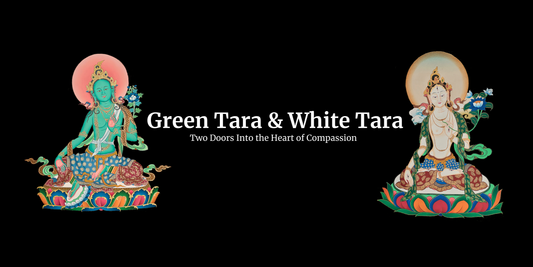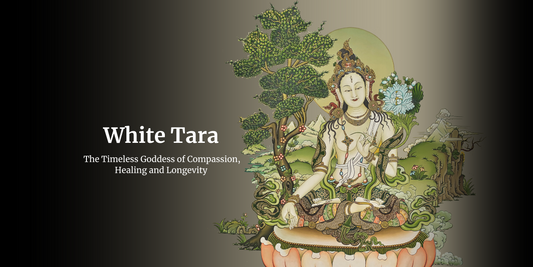- Buddhas Art of Healing
- Thangka
- Path to Nirvana: A Journey to Ultimate Liberation

Path to Nirvana: A Journey to Ultimate Liberation
Have you ever wondered what the path to nirvana really looks like? It is often spoken of as the final freedom—the end of sorrow and the cycle of rebirth. But the journey itself is the same as the destination.
Through a Zen story and the classical four stages, we will reveal how this path steps to Nirvana. Ready to walk with us? Let's see together.
What is Nirvana? Beyond Misconception
The word "Nirvana" (or Nibbana in Pali) translates to "blowing out." This is not a place where you go, but the situation of realization. This is the reason for extinguishing three primary fires that cause sorrow:
- Lobha (Greed): Endless craving for pleasure, property, and verification.
- Dosa (Aversion): Hatred, anger, and rejection of what is unpleasant.
- Moha (Delusion): Fundamental ignorance of the true nature of reality.
When these fires are completely extinguished, a person receives Nirvana. It is characterized by unconditional peace, intensive knowledge, and immense compassion, which is free from the obstacles of the ego and karma cycle.

Discover our Path to Nirvana Thangka, a well-crafted thangka that reflects the stages of awakening.
The Four Stages of the Path to Nirvana
Buddha underlined a gradual journey to Nirvana, which can be obtained through dedicated practice. This route is not linear for all but is often described through four progressive stages of enlightenment, known as "Four Stages of Sainthood" or "Four Arya Persons."
1. Sotapanna (Stream-Enterer)
First success on the path. A Sotapanna has entered the "stream," which essentially flows towards Nirvana.
-
Main Achievement: They have erased three of the ten "fetters" that bind the problem: self-illusion (identity view), doubt (in the path), and attachment to rites and rituals.
- Rebirth: A Stream-Enterer is guaranteed to attain Nirvana within seven lifetimes and will never be reborn in a lower realm (e.g., as an animal or hell being).
2. Sakadagami (Once-Returner)
The second phase reflects refinement of the practitioner’s being.
-
Main Achievement: They have greatly weakened the fourth and fifth embryos: erotic desire and sick desire.
- Rebirth: As the name means, a once-returner will be reborn only once before attaining Nirvana.
3. Anagami (Non-Returner)
A stage where all relations with the erotic world are separated.
-
Main Achievement: Erotic desire and sick fetters are completely destroyed.
- Rebirth: An Anagami will not return to the human or any other erotic realm. They take rebirth in a pure residence (a high heavenly realm) and get Nirvana from there.
4. Arahant (The Worthy One)
The final stage of the path and the ultimate goal in Theravada Buddhism.
-
Main Achievement: The remaining five fetters have disappeared: desire for good existence, desire for existence, conceit, restlessness, and ignorance.
- State of Being: An Arahant has attained complete knowledge and nirvana in this life. They are free from all future rebirth and the pain of the world. Their functions, which are now free from karma, are purely inspired by wisdom and compassion.

Explore our detailed Path to Nirvana Thangka collection.
A Zen Story: The Direct Experience of Nirvana
Intellectual understanding is not enough. The path requires a direct, experienced attainment. A classic Zen story, often shared by Sadhguru, fully shows this point:
A university professor once visited a Zen master to learn about Zen. As the master served tea, the professor began to talk continuously about his thoughts and knowledge. The master listened patiently and continued to pour tea in the professor's cup until it overflowed.
Startled, the professor cried out, “Stop! The cup is full. No more will go in!"
Zen master replied peacefully, "You are like this cup, so full of your own opinion and speculations. How can I show you until you first vacate your cup?
This story is a powerful metaphor for the path to Nirvana. “Nirvana cannot be understood conceptually; it must be experienced.” The mind, cluttered with dogma, past knowledge, and disorganized with prior perceptions, should be empty, calm, and receptive to see the truth.
The path is not about getting more information but about enlisting and letting you feel what is already.
Walking the Path: How to Practice Today
The historical path to Nirvana is the great eightfold path: the Right View, the Right Intention, the Right Speech, the Right Livelihood, the Right Effort, the Right Mindfulness, and the Right Concentration. In a modern context, it can be distilled into practical stages:
-
Cultivate Mindfulness (Sati): Practice being intensely aware of your thoughts, emotions, and actions in the present moment without judgment. This is the foundation to see the reality clearly.
-
Live Ethically (Sila): Follow moral teachings (non-harming, truthful speech, etc.). It creates a life of minimum struggle and karma, which provides the necessary peace for intensive practice.
-
Develop Wisdom (Prajna): Study teachings, but, even more importantly, examine the nature of your mind and reality through meditation and investigation. Question your beliefs.
- Practice Meditation (Samadhi): Dedicate daily time to calm the mind. Meditation is the primary tool to go beyond the nonsense of the ego and to experience the consciousness beyond ordinary.
Structuring the Path to Nirvana
|
Stage |
Key Transformation |
Outcome |
|
Stream-enterer |
Dissolves self-view, doubt, attachment to ritual |
Rebirth limited to a max of seven more lives |
|
Once-returner |
Weakens sensual desire and ill will |
Only one remaining human rebirth |
|
Non-returner |
Eliminates lower fetters; remains in higher planes |
Does not return to human realm |
|
Arahant |
Fully erase defilements, attaining complete liberation. |
Nirvana realized, and the cycle of rebirth ends |

1. What is Nirvana in Buddhism?
Nirvana is the ultimate liberation from suffering and the cycle of birth, death, and rebirth. This is not a place but is a state of intensive peace, knowledge, and freedom from all attachments.
2. How is Nirvana different from Enlightenment?
The “Enlightenment” refers to the real nature of reality, while “Nirvana” particularly points to the complete closing of sorrows and desires.
3. Can anyone achieve Nirvana, or is it only for monks?
According to Buddhist teachings, Nirvana can be attained by someone through dedicated practice of morality, meditation, and wisdom.
4. How does one practice the Path to Nirvana in daily life?
The Noble Eightfold Path serves as a guide: practicing right speech, right action, right livelihood, mindfulness, and meditation in everyday life cultivates conditions that move one closer to Nirvana.
5. Is Nirvana the same as heaven?
No. Heaven in Buddhism (deva realms) is still part of samsara, where beings enjoy pleasure but remain subject to rebirth. However, Nirvana transcends all cycles of rebirth and suffering.
Conclusion: The Ever-Present Potential for Nirvana
The path to Nirvana is not a distant, mythical journey reserved for monks in remote monasteries. It is a systematic process of internal change that is also available to someone with honesty and dedication to walk.
It begins with the simple yet profound task of “emptying your cup”: detachment, calming the mind, and opening yourself to the direct experience of reality, free from deformation.
Nirvana is not destruction but the highest fulfillment. It is the end of suffering and a feeling of an eternal, unconditioned peace that is present within all beings, waiting for it to be discovered.
Discover Buddha's Art of Healing if you're looking to get the Path to Nirvana or Buddha Nirvana Thangka.
Also, if you have time, check out our Instagram, where we post more interesting details on thangkas.



